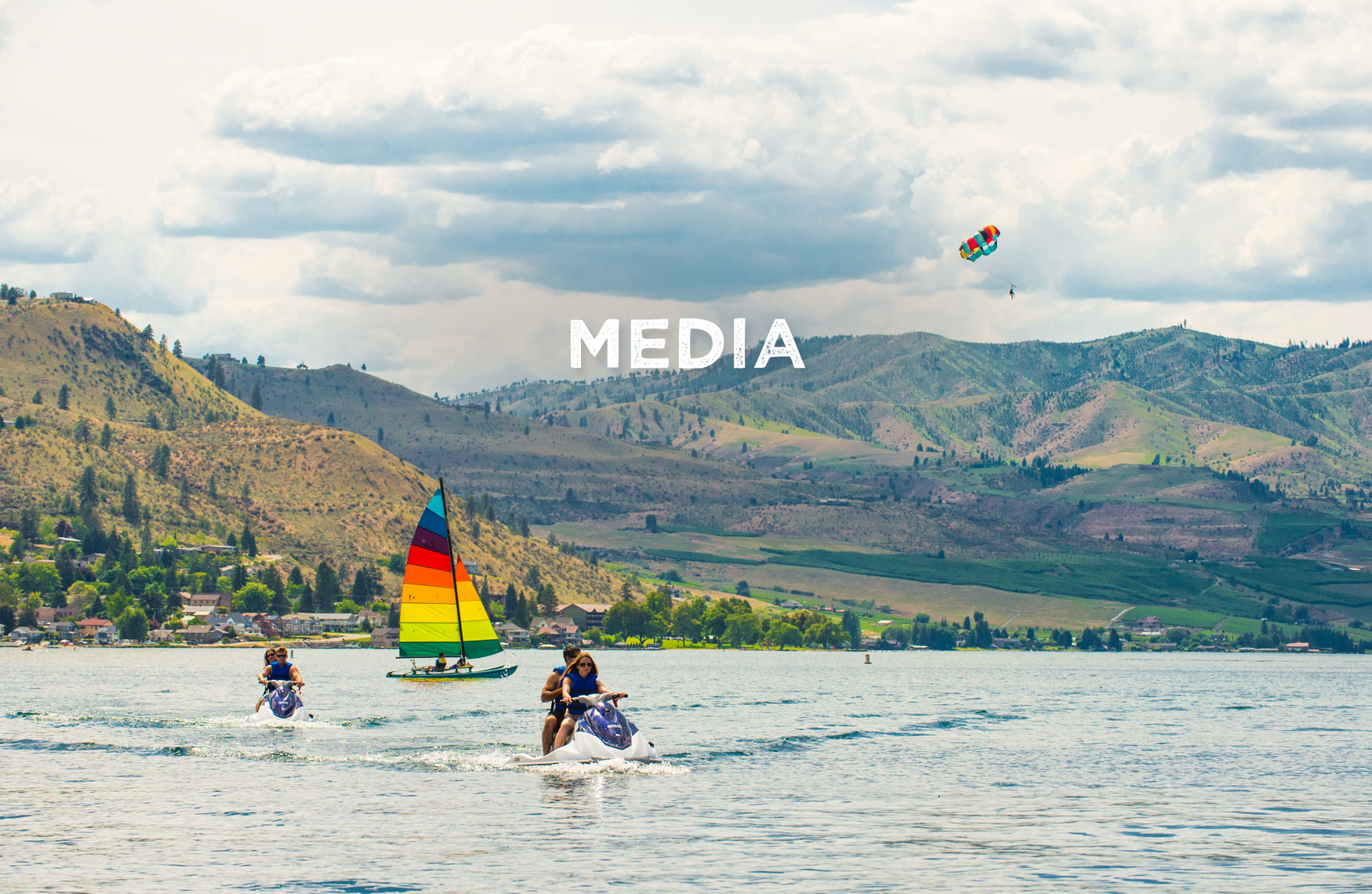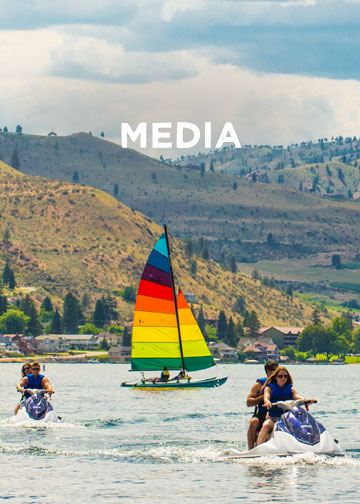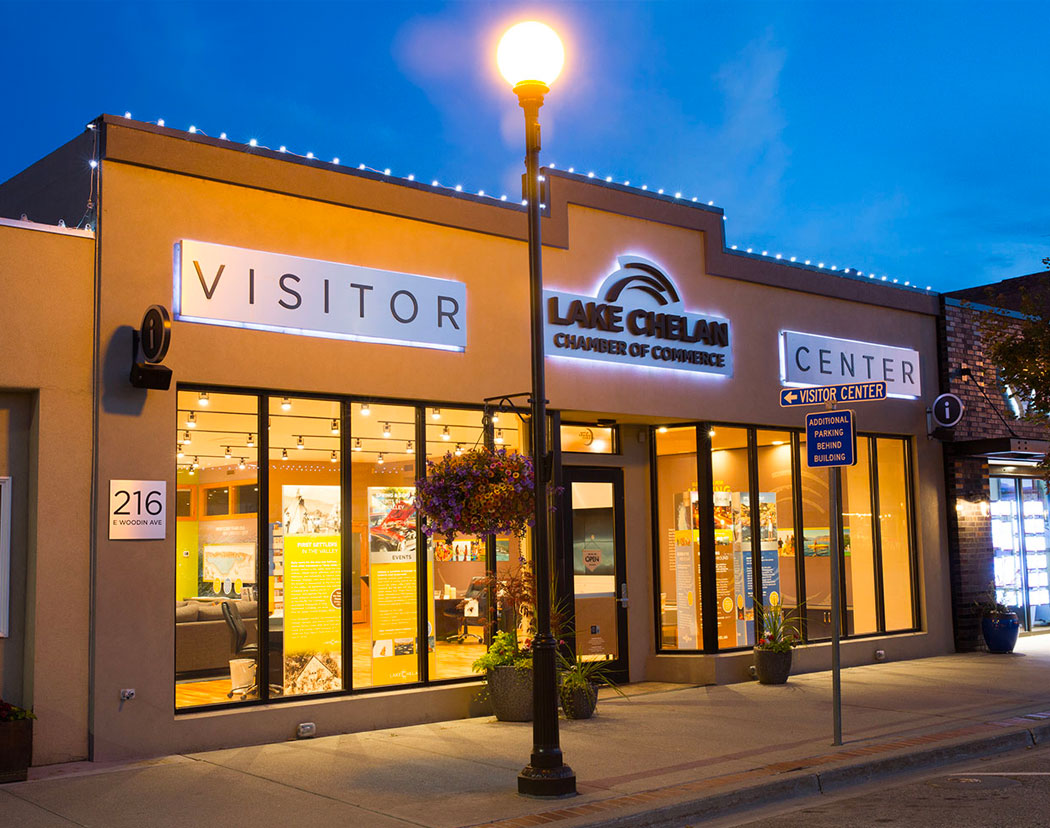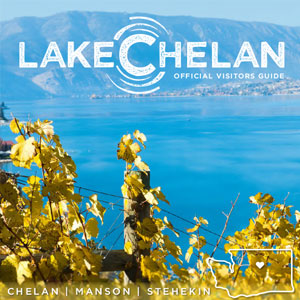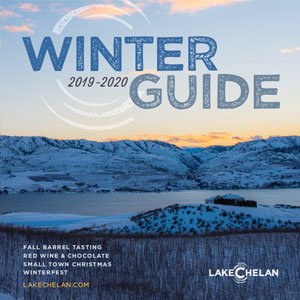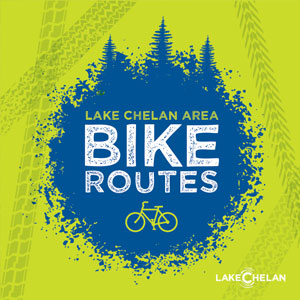The Lake Chelan Valley, surrounding the 50.5-mile Lake Chelan and home to the communities of Chelan, Manson and Stehekin, offers four seasons of recreation, charming shopping districts, and bountiful agriculture including an emerging wine industry.
Agriculture
In agricultural circles, the shores of Lake Chelan are recognized for their world famous apples. Lake Chelan apples are known for their excellent taste, long shelf life, and superior color. Between 9,000-10,000 acres of the Chelan Valley are devoted to growing apples and other fruits. Although apples are the largest crop in the Valley, cherries, pears, apricots, peaches and wine grapes are also produced.
Wineries
With over 200 acres of wine grapes and over 30 wineries, the Lake Chelan Valley is the ultimate wine-lovers vacation destination. The Lake Chelan Valley’s young and lively wine scene is attracting attention from winemakers, grape growers and wine enthusiasts from through-out the region. Many wineries feature live summer music and savory dining options. Annual wine weekends include Red Wine & Chocolate, Spring Barrel Tasting and Lake Chelan Crush.
Climate
Chelan’s arid climate and lack of rainfall make it a popular year-round destination among outdoor enthusiasts. The Valley experiences over 300 days of sunshine annually and has four distinct seasons. Despite the area’s desert climate, agriculture abounds thanks to irrigation from the lake as well as the Columbia River.
Annual Precipitation
- Chelan & Manson: 12 in. Stehekin/Upper Valley: 35 in.
- Annual Snowfall: 39 in.
- Average Lake Temperature: 60.5° F
- Glacier Creation
Lake Chelan formed gradually over millions of years with the rise of the Cascade Mountains. Today about 100 glaciers are liberally sprinkled on the peaks draining into Lake Chelan. These glaciers store water through the summer, which helps irrigate the productive fruit orchards in the lowlands.
Native Americans
Native Americans probably inhabited the lower Chelan Valley for thousands of years prior to its “discovery” by pioneer trappers, explorers, and prospectors in the 1800s. The Native Americans were called the “Tsillane,” later spelled Chelan, meaning ‘deep water’.
The Miners
In the 1880s, the lure of precious metals brought prospectors to the upper regions of Lake Chelan. Stehekin became a busy lake port. The Howe Sound Mining Company purchased Holden Mine in 1930. Up to 600 people lived at Holden during peak operation of the mine. Though the Holden Mine was originally thought to contain enough ore to operate for fifty years, plummeting copper prices in the 1950s forced the mine to shut down after only twenty years of operation. During this time, $66.5 million worth of copper, gold, silver, and zinc was extracted.
Attracting Attention
The mines of Stehekin did not make many people rich, but other visitors to the area saw that its lasting value lay not in the gold and silver hidden in the hills, but in its scenic grandeur. Congress passed a bill in 1968 creating the North Cascades National Park, Ross Lake National Recreation Area, Lake Chelan National Recreation Area, and the Pasayten Wilderness.
Though the miners and trappers have long since left the area, their independence and self-reliant spirit live on in many of the hardy residents of the Valley. Only in 1963 did the Stehekin community acquire its own hydroelectric power plant. During the winter the ferryboat travels from Chelan to Stehekin with the mail and fresh food only three times a week.
VISITOR CENTER
Visitor Center location & hours:
216 East Woodin Ave, Chelan, WA 98816
(509) 682-3503
1.800.4CHELAN
Monday-Friday: 9am-5pm
Saturday & Sunday: 10am-4pm
Get the Guides!
Amazing experiences and great deals inside! Click on the guides below to download. These exclusive guides will help you get the most out of your visit to Lake Chelan.

